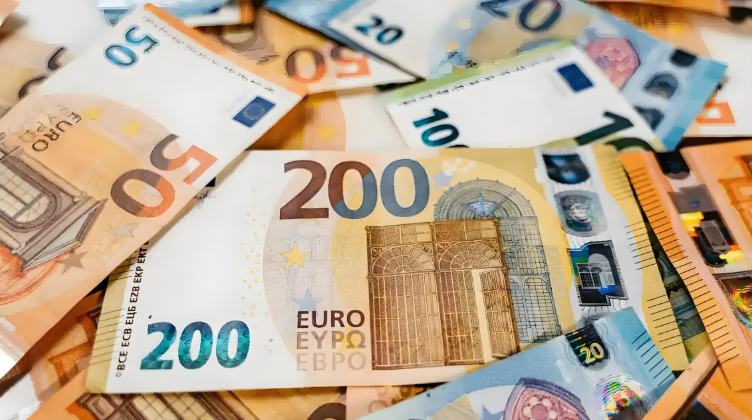Eurozone CPI Rebounds to 2.4%
Advertisements
The economic landscape of the Eurozone is currently oscillating, particularly with the recent surge in inflation rates. As revealed in the latest Consumer Price Index (CPI) report for December, inflation climbed to 2.4%, a notable increase from November's figure of 2.2%. Such a rise has predominantly been propelled by escalating energy costs. The implications of this inflation uptick are significant and have implications for European Central Bank (ECB) monetary policy, illuminating the delicate balance policymakers must strike in a fluctuating economic environment.
To unpack the details, the inflation acceleration registered in December is largely attributed to a rebound in energy costs, marking the first such rise since July. Additionally, when volatile components are stripped away, the core inflation rate nudged to a higher reading of 2.7%, coupled with a slight uptick in service prices rising to 4%. This juxtaposition of inflation data serves as a crucial indicator of the underlying economic stability within the region.
The ECB had previously cautioned that the resurgence in inflation should not be wholly unexpected. Analysts predict that the inflation rate may stay steady at the 2.4% threshold into January, placing further emphasis on the factors contributing to this inflationary environment. Bond markets exhibited little reaction to the swell in inflation, as expectations for interest rate cuts remained stable despite the shifting economic indicators. The yield on German two-year bonds slightly dipped to 2.18%, maintaining a cautious optimism regarding future monetary policy directions thought by many to hinge precariously on inflation trends.
Jamie Rush, Bloomberg’s lead European economist, delineated that a significant portion of the inflation increase is a result of the base effects related to fuel prices. He remarked that the overarching economic atmosphere still trends towards deflation, positing that the ECB may continue to diminish interest rates by another 100 basis points this year. This perspective encapsulates the dual nature of the current economic condition — while inflation is rising, the broader concern remains whether it has the potential to destabilize consumer confidence and spending patterns.
Recent reports from various nations have also added layers of complexity to the inflation narrative, with Germany and Spain's price rises surpassing expectations while France has lagged behind projections, and Italy showed unexpected sluggishness. The contention swirling around inflation expectations creates a multifaceted dialogue for policymakers, as a separate ECB report indicated that consumer inflation expectations had risen in November, highlighting the disparities in economic recovery across the Eurozone.

Despite the uptick in overall inflation metrics, officials within the ECB are resolutely focused on the necessity of reducing borrowing costs. The prevailing 3% deposit rate is viewed as a restrictive factor, limiting economic activity in a market that desperately requires stimulus. In delineating the approach to rate cuts, there is a preference for a ‘gradual’ reduction strategy — opting for a quarter-point cut at a time. Nevertheless, some committee members, including François Villeroy de Galhau of the French Central Bank, advocate for retaining the option for more aggressive rate cuts. This divergence in views encapsulates the ongoing tension within the ECB regarding inflation control versus growth stimulation.
Reflecting on the preceding year, the reduction of inflation rates below the 2% mark appeared to signify a major triumph in economic governance. However, this apparent success is shrouded in complexities. Much of the decline can be attributed to the fluctuating costs of energy, which have exhibited a rollercoaster-like trajectory. The sharp declines in energy prices have resulted in a statistical ‘cooling’ effect on inflation rates, but with those temporary influences dissipating, the reality of the economic landscape is becoming increasingly visible. Emerging economic indicators suggest that a rebound in inflation could very well be on the horizon — a scenario that raises alarms for both market participants and policymakers alike.
The persistent specter of inflation in services presents another layer of concern. In recent months, the service sector's inflation rates have hovered around 4%, largely tethered by complex dynamics that defy straightforward analysis. One notable factor contributing to this phenomenon is wage growth, which has a more pronounced role within the service industry's cost structure compared to other sectors. As wages rise, they inevitably exert upward pressure on prices. Nevertheless, the ECB remains cautiously optimistic in its assessment, indicating that persistently high inflation should not be considered a permanent fixture. Recent data does suggest a slowing in wage growth during the third quarter, reminiscent of receding tides after a peak flood. Furthermore, a host of preliminary indicators signal a softening employment market, with declining recruitment demand and other signs hinting at a broader economic slowdown.
Importantly, the situation regarding energy prices remains fluid, with the potential for future increases as winter conditions escalate heating demands across Europe. The rapid depletion of natural gas reserves has propelled the issue to the forefront, with current consumption rates exceeding those observed over the past seven years, underscoring the fragile state of energy availability.
On a broader scale, trade tensions, particularly related to potential tariffs from the United States, loom as a significant factor that may influence the Eurozone’s economic landscape. The consequent effects on inflation will depend on a complex interplay of several elements, including consumer behavior and trade dynamics. The President of the Dutch Central Bank, Klaas Knot, has verbalized concerns; he warns that if commitments are upheld, Chinese goods could flood the European market at lower prices, inadvertently exacerbating deflationary challenges in the region.
The Eurozone’s economic environment in December illustrates a juxtaposition of rising inflation, primarily fueled by energy costs, set against an overarching backdrop of underlying deflationary pressures. The ECB's continued strategy of interest rate reductions seeks to encourage spending and investment amidst these complex dynamics. However, the uncertainties posed by volatile energy prices and evolving trade policies present a challenging landscape for economic forecasting and may dictate future trajectories for inflation and growth.
Post Comment